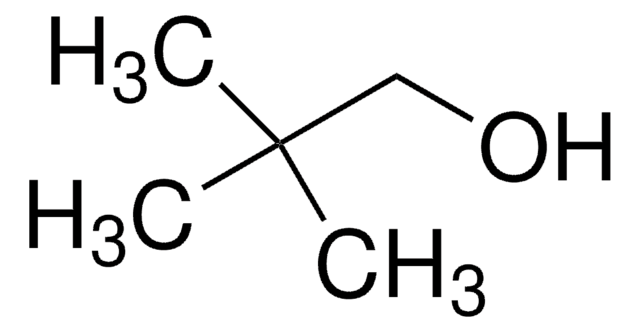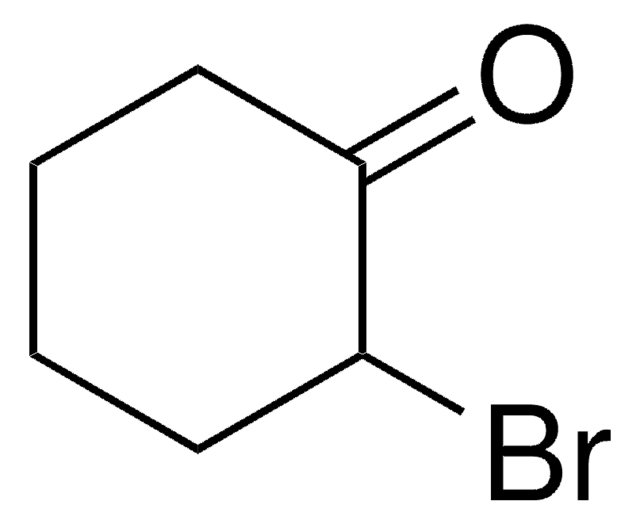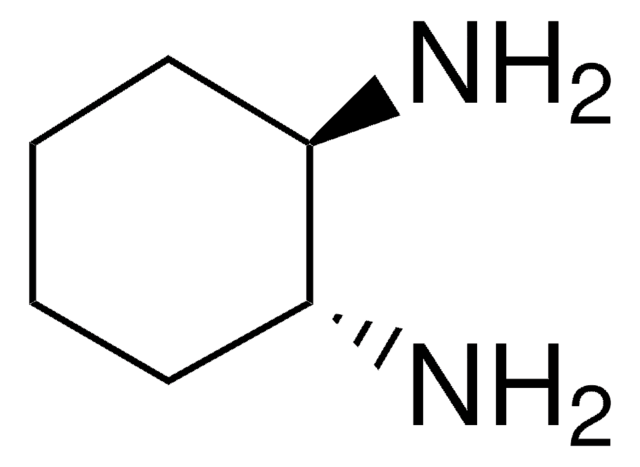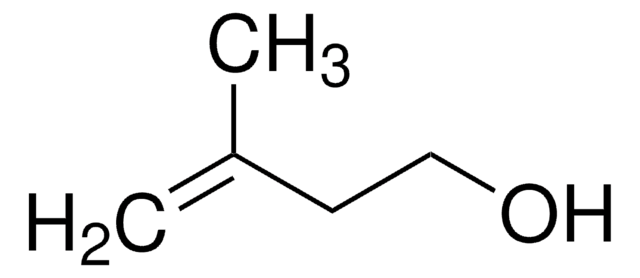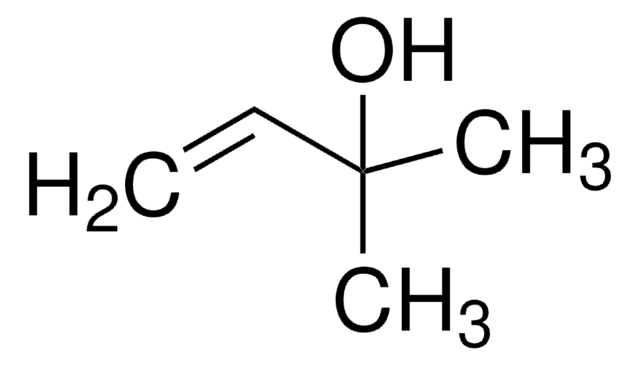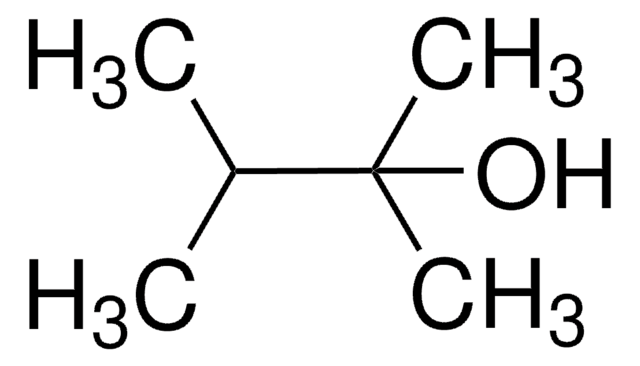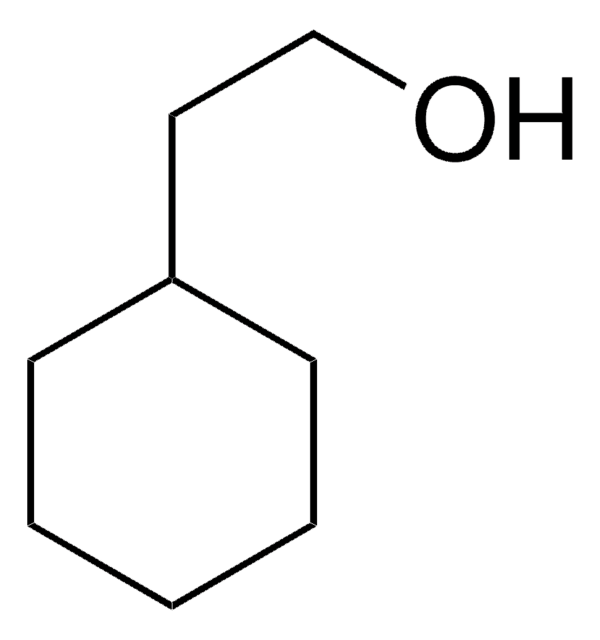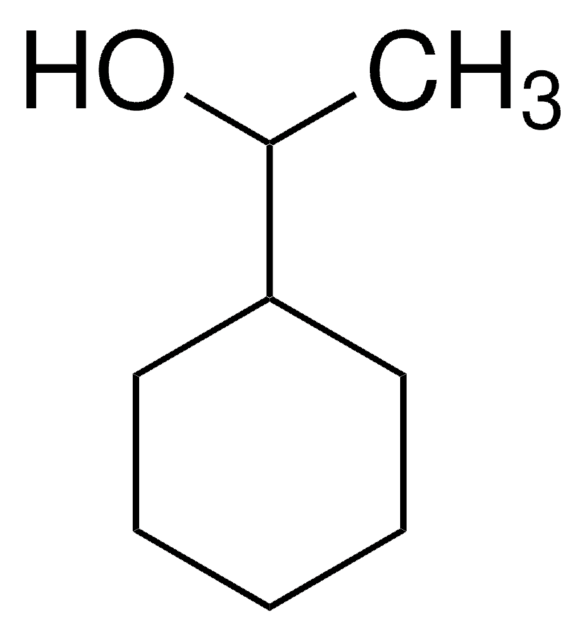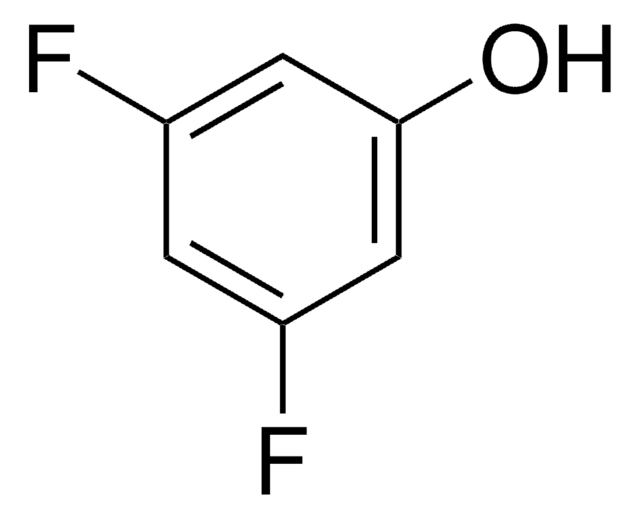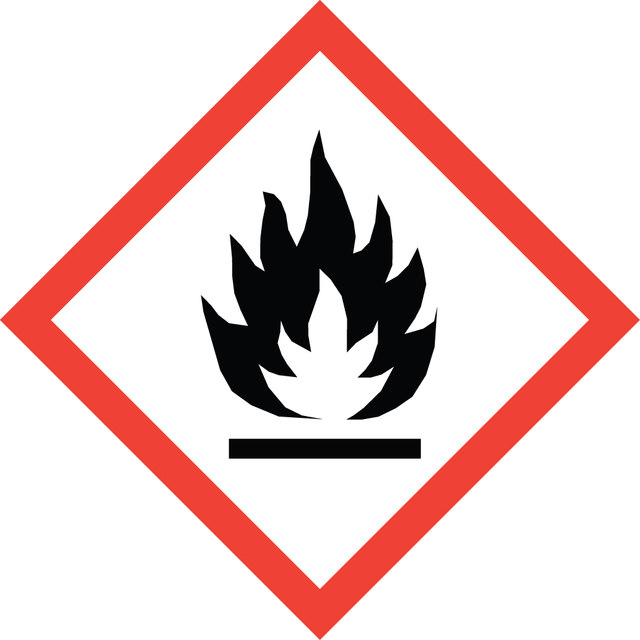All Photos(2)
About This Item
Linear Formula:
CH3C5H8OH
CAS Number:
Molecular Weight:
100.16
EC Number:
MDL number:
UNSPSC Code:
12352100
PubChem Substance ID:
NACRES:
NA.22
Recommended Products
Assay
99%
form
liquid
refractive index
n20/D 1.446 (lit.)
bp
149-150 °C (lit.)
density
0.91 g/mL at 25 °C (lit.)
functional group
hydroxyl
SMILES string
CC1CCC(O)C1
InChI
1S/C6H12O/c1-5-2-3-6(7)4-5/h5-7H,2-4H2,1H3
InChI key
VEALHWXMCIRWGC-UHFFFAOYSA-N
Application
3-Methylcyclopentanol has been used in the synthesis of pentacycloalkoxy-substituted phosphazenes and 3-methyl cyclopentylbromide.
Signal Word
Warning
Hazard Statements
Hazard Classifications
Flam. Liq. 3
Storage Class Code
3 - Flammable liquids
WGK
WGK 3
Flash Point(F)
131.0 °F - closed cup
Flash Point(C)
55 °C - closed cup
Personal Protective Equipment
dust mask type N95 (US), Eyeshields, Gloves
Regulatory Information
危险化学品
Choose from one of the most recent versions:
Already Own This Product?
Find documentation for the products that you have recently purchased in the Document Library.
A Synthetic Procedure for Secondary Bromides from Alcohols.
Jenkins GL and Kellett Jr JC.
The Journal of Organic Chemistry, 27(2), 624-625 (1962)
The synthesis and characterization of cycloalkoxy-linear phosphazenes.
Ozturk AI, et al.
Phosphorus, Sulfur, and Silicon and the Related Elements, 178(10), 2097-2105 (2003)
Mireia Oromí-Farrús et al.
Journal of analytical methods in chemistry, 2012, 452949-452949 (2012-06-01)
The use of iodine as a catalyst and either acetic or trifluoroacetic acid as a derivatizing reagent for determining the enantiomeric composition of acyclic and cyclic aliphatic chiral alcohols was investigated. Optimal conditions were selected according to the molar ratio
Our team of scientists has experience in all areas of research including Life Science, Material Science, Chemical Synthesis, Chromatography, Analytical and many others.
Contact Technical Service